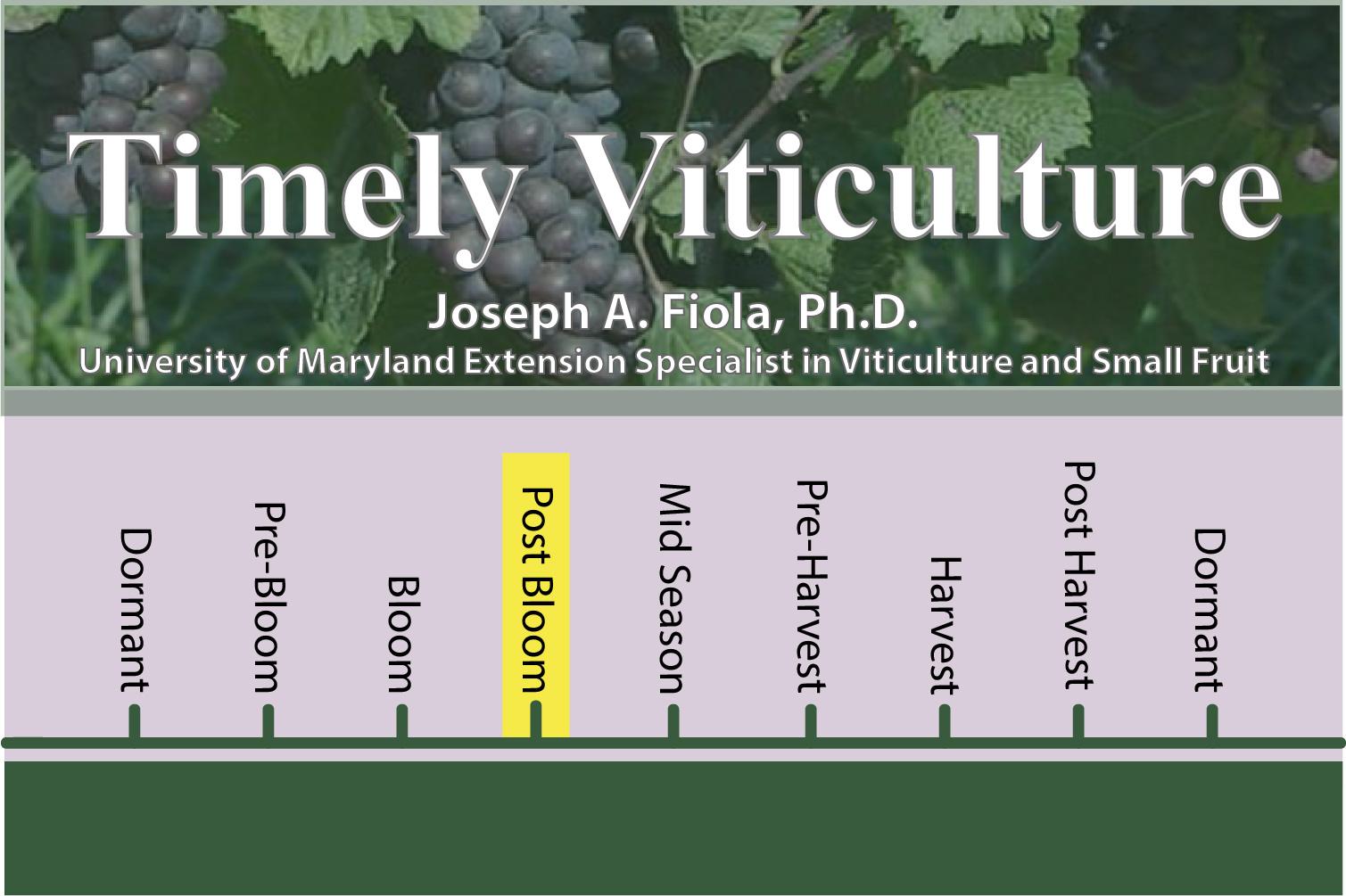Downy Mildew Management
Downy mildew disease of grapevines is caused by an oomycete, a water/mold that is more closely related to brown algae than the typical plant fungi. Downy is now a season-long challenge for grape growers in the East and that is often difficult to manage as it can develop into an epidemic very quickly under favorable weather conditions. Typically, 7 or 8 fungicide sprays are applied specifically for DM management per season. Additionally, 1 or 2 postharvest sprays are sometimes needed to protect vines from premature defoliation, as leaves need to stay photosynthetically active to produce carbohydrate reserves for the winter cold resistance and next season’s shoot and fruit development.
Downy Mildew Basics
- The downy mildew (DM) pathogen, Plasmopara viticola, is a fungus-like organism (an oomycete) that overwinters in the vineyard as resting spores (oospores) produced from infections on last year’s fallen leaves.
- Overwintering infections may become active in the spring at about 3 to 4-inch shoot length.
- Oospores germinate to produce sporangia (fruiting bodies) during wet periods at temperatures of 52° F or higher.
- DM can attack all green parts of the vine, especially the leaves.
- Primary infections occur when sporangia are blown or splashed onto shoots, leaves, or developing clusters. Sporangia release “swimming” spores (zoospores) onto wet tissue. Zoospores migrate to stomata and can cause infection within a few hours.
- Secondary cycles of infection begin when these primary infections produce sporangia, visible as cottony white fibers on the undersides of infected leaves and on clusters. These sporangia may be blown long distances.
- Rapid secondary spread requires warm, humid nights (65–77° F, >95% RH) followed by cloudy weather and frequent showers. Under ideal conditions, each new infection can develop and produce spores in 4 to 5 days. Disease levels can escalate quickly from minimal to devastating.
- Lesions on the upper surface of the leaves are angular, yellowish, and sometimes oily; a white downy fungal growth (sporangia) will appear on the underside and other infected plant parts.
- Vines remain vulnerable to defoliation throughout the season. Premature loss of leaves can jeopardize yield and increase the risk of winter injury.
- Infected parts of young fruit clusters may become discolored, or covered with white, cottony spores, and ultimately wither and die.
- The clusters become immune to infection 4 weeks after bloom.
Scouting and Managing Downy Mildew
- Prevention of primary infections is of major importance. The pathogen overwinters as oospores on last year’s fallen leaves, so practices to reduce initial inoculum in the spring are beneficial.
- Examples include shredding with a flair mower, burying, or removing leaves during the dormant season.
- Examples include shredding with a flair mower, burying, or removing leaves during the dormant season.
- DM epidemics are driven by moisture in the air, soil, and on the vine. Choosing sites with well-drained soils, maximizing air circulation, and speeding up vine drying through proper shoot positioning and leaf pulling will help to prevent primary DM infections and slow secondary spread.
- Begin protectant fungicide sprays when shoots are 1–2 inches in wet springs. Otherwise, add a protectant no later than the pre-bloom spray.
- Mancozeb, captan, ziram, and copper offer good protection when applied at 7 to 10-day intervals.
- Resistance to FRAC 11 (e.g. Pristine) and FRAC 40 (e.g. Revus) fungicides have been detected to DM pathogen in the region, so minimize the use of these chemical classes of fungicides and do not use them alone.
- After bloom, scout regularly for DM on leaves, shoots, and clusters.
- Early leaf symptoms are yellow “oil spots” on the upper sides that soon produce white, cottony spores on the undersides. Late lesions turn brown, and severely infected leaves may drop.
- Infected clusters may fail to set fruit or turn brown, shrivel, and become covered with white, cottony spores.
- If no DM is present in your vineyard, continue protectant sprays through the 1st cover spray (2nd post-bloom spray) to fully protect fruit, then adjust your cover sprays according to the weather. Fruit clusters become immune about 4 weeks after bloom.
- Captan, ziram, copper, carboxylic acid amides (CAAs; Revus, Zampro, Forum), Quinone inside inhibitors (Qils; Ranman), and phosphites (e.g. Phostrol, ProPhyt) are options after you reach the seasonal limit or 66-day PHI for mancozeb.
- CAAs, Qils, or Phosphites should be rotated with other materials for resistance management.
- If you see symptoms of DM, apply a fungicide with post-infection and anti-sporulant activity as well as protective activity as soon as possible.
- Ridomil Gold is available only as a premix with mancozeb (66-day PHI) or copper (42-day PHI). It is very effective on serious outbreaks but highly resistance prone—and expensive. Make no more than 1 application per season, and rotate to another DM fungicide between applications.
- Phosphites (0-day PHI) offer good post-infection and anti-sporulant activity, especially on “oil spot” lesions that are not yet sporulating.
For more information, contact Dr. Mengjun Hu at mjhu@umd.edu.
Timely Viticulture is designed to give those in the Maryland grape industry a timely reminder on procedures or topics they should be considering in the vineyard.
